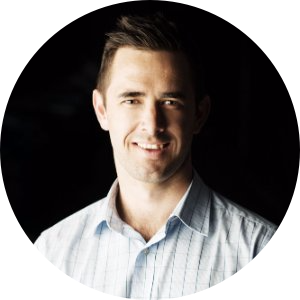Know and Understand Your Limitations
It’s important to be aware of how each piece of content fits into the grand content marketing effort. For instance, when you’re doing a number of interviews with researchers in lab coats, even really well-done pieces can start to feel boring. Do what you can to add variety, and don’t force visuals when they aren’t going to work. Not all content can have a visual element.
Some content is only going to be interesting in the academic community, so forcing it out on your Instagram page, for instance, isn’t going to win you any favors. But just because it doesn’t fit the mold doesn’t mean there isn’t an opportunity for marketing. Think about whether this content would be better served as an event or presentation.
The story you’re trying to tell, not the production, is key. While ten pieces of content is our goal, it’s not always the reality. In marketing, we have to be flexible.
Formalize the Process
Once you’ve tried your hand and experimented with content creation, you’ll naturally find what works best for your audience and your interview subjects. It’s at this point that you should try to formalize the process so you or your team can run with it when you have limited lead time.
Look at your annual calendar and identify as many pieces of content as you can that have longer lead times. For us in Queensland, we have Research Week, which we know about months in advance and can plan accordingly. This gives us time to brainstorm new ideas, set up our interviews, and effectively promote this content.
And even with limited lead time, there’s often an embargo window that allows us to gather as a team, brainstorm, and get our heads around the research. Because our content source is typically complex, we make a process of confirming our understanding and the implications of the research before scheduling the formal interview with the researcher.
Whenever possible, tie your stories to the human side. This means understanding and including the impact of our story on the community and inviting collaboration. When we have the opportunity to highlight the human element and tap into people’s natural emotions, it makes for content that’s going to perform well with a wider audience.
In an ideal scenario, advanced planning and a formal process allow us to create a cadence around each piece that may include teasing out content in advance of its release.
Build Advocates and Internal Influencers
As marketers, we’re not just selling our brand to an outside audience, we have to sell it to our internal stakeholders as well. By doing so, we create partnerships and opportunities to tell more engaging and nuanced stories.
We constantly look for opportunities to collaborate or share our efforts with our colleagues in other parts of the university. We work as partners to give them a heads up about content that may be useful for their efforts as well.
With our process in place, we’re better equipped to produce winning content at a moment’s notice. We’ve had a small number of academics with really great results that led to philanthropic conversations. For our researchers, this highlights the benefits of marketing and helps build more ambassadors for our work. Now, when we connect with a new researcher, we make an effort to share these success stories. It’s not a promise, but a tool that can help them connect with colleagues outside the university or potentially even lead to more funding.
While most of our content is branded to fit our social media outputs, we have also shared more ‘raw’ unbranded content with the researcher so they can share it on their pages. In doing so, we build relationships and create evangelists within the organization.
By identifying some of our top influencers at the school, we’ve also tapped into influencer marketing. We encourage these influencer researchers to share our content on their channels and provide them with unbranded content they can use that points back to us. This type of relationship works well for both of us, and they appreciate the access to rich content.
Investing in content creation is paying off in more ways than one. It’s nice to have top researchers telling their colleagues that they should connect with the marketing team, instead of always being in the position of chasing the story. More engagement internally as well as externally has quadrupled our blog traffic and raised our social media engagement by 20%. But what’s even more rewarding is the researchers who have shared how our marketing successes have opened them to new collaborators or patients who want to be a part of their work.




